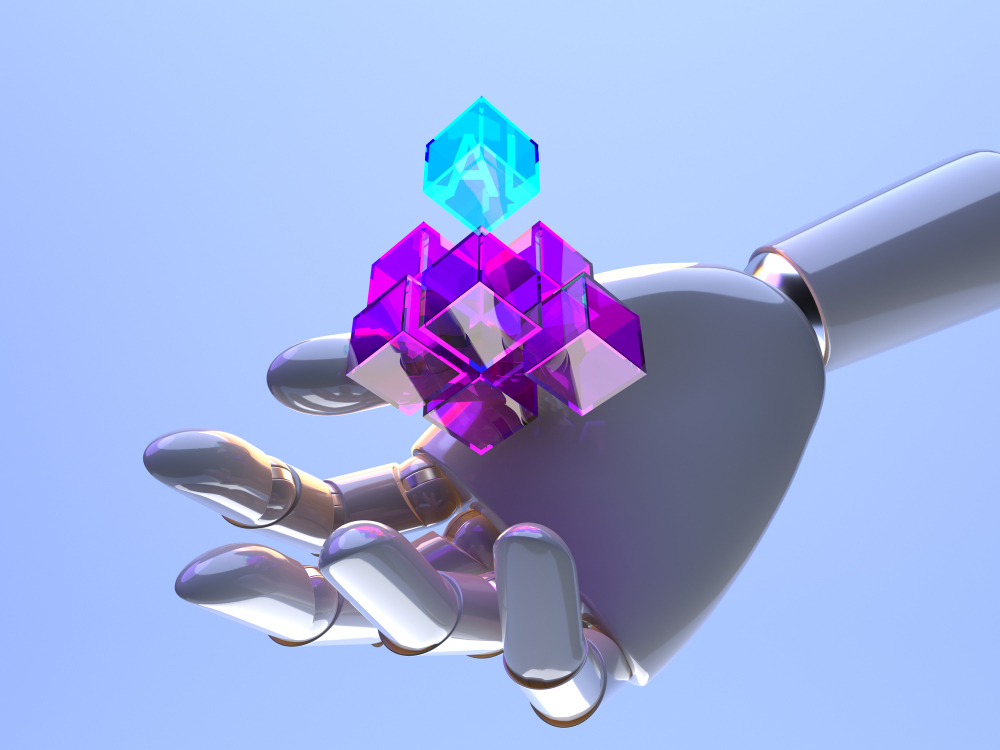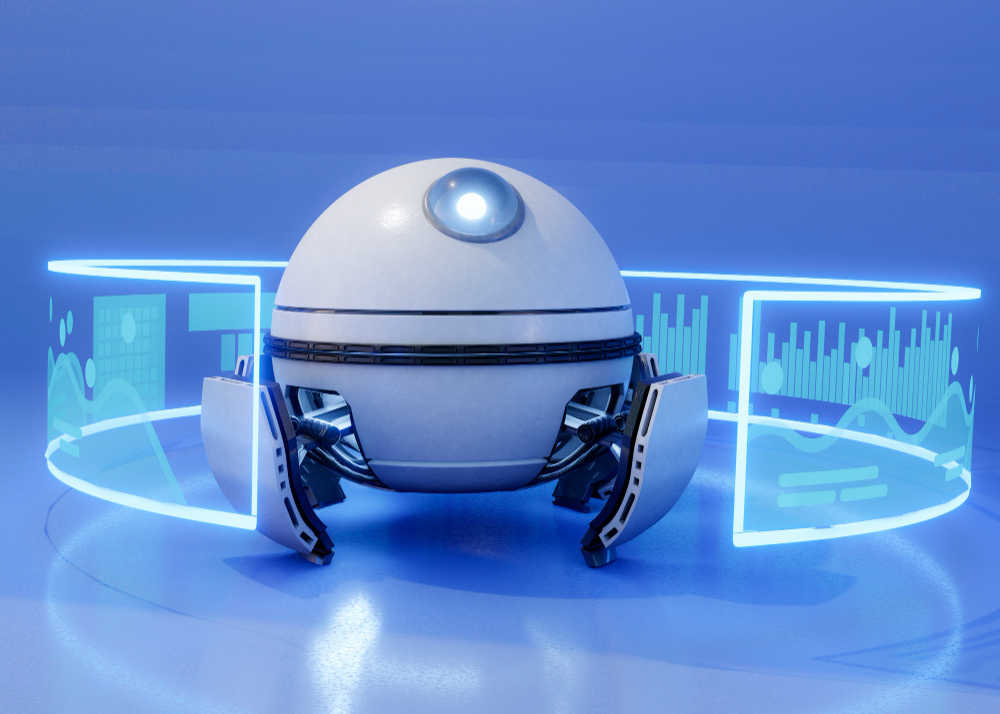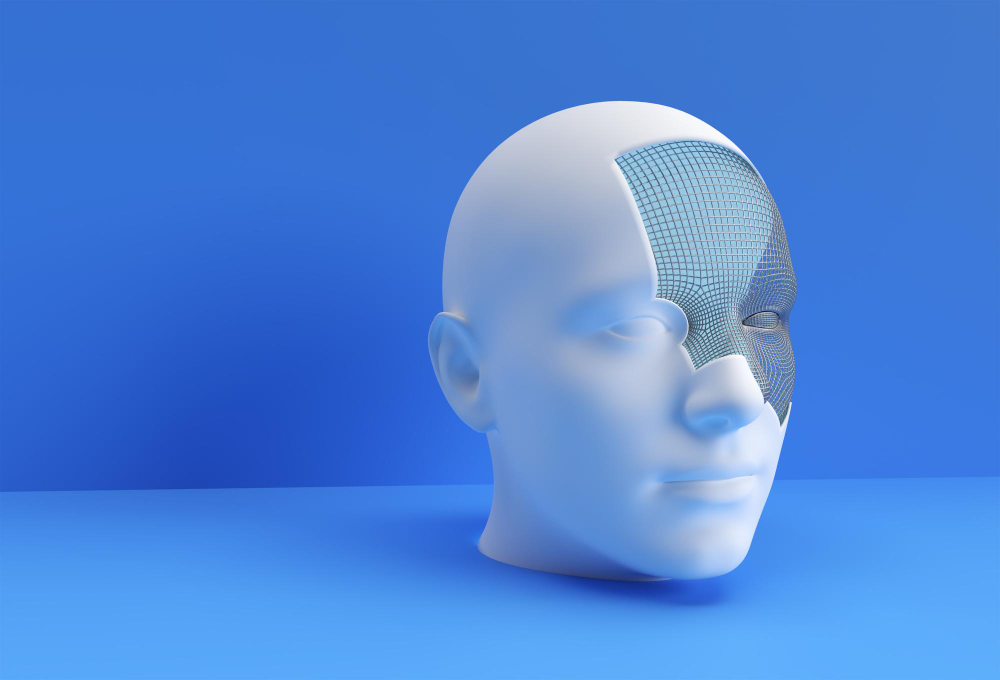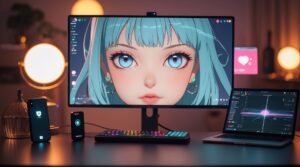Introduction
3D models are digital representations of any object or scene created using three-dimensional data which include depth, allowing them to appear more realistic and interactive. These 3D models can range from simple geometric shapes to complex structures, characters, or environments, and they various applications in different industries, including animation, gaming, business, virtual and augmented reality. Today, the introduction of the AI 3D model generator has made this creative process easy with easy customization and real time collaboration.
Let’s understand how you can create fast and efficient 3D models using an AI 3D model generator.
Understanding the Basics of 3D Modeling
3D modeling involves the creation of three-dimensional objects or scenes using specialized software or tool. These models are built by manipulating vertices, edges, and faces in a virtual 3D space to create shapes and structures. The process typically involves techniques such as extrusion, sculpting, and Boolean operations to add or subtract geometry, resulting in detailed and realistic representations of objects or environments.
Different Types of 3D Modeling Techniques
Here is a list of different techniques you can use to create 3D models:
Polygonal Modeling:
This technique involves manipulation of polygonal meshes composed of vertices, edges, and faces to create a 3D model. It is one of the most common and versatile methods used in 3D modeling, suitable for creating a wide range of objects with varying levels of detail.
NURBS Modeling:
NURBS (Non-Uniform Rational B-Splines) modeling uses mathematical curves and surfaces to define shapes in 3D space. It is often preferred for creating smooth and organic surfaces, such as automotive bodies or character 3D models, due to its ability to maintain precise control over body measurements and surface continuity.
Sculpting:
Sculpting allows artists to manipulate digital clay-like materials directly, simulating the traditional sculpting process. This technique is well-suited for creating organic shapes and characters with intricate details, offering intuitive and expressive tools for sculpting fine surface textures and features.
Parametric Modeling:
Parametric modeling involves creating a 3D model by defining parameters and constraints that govern the shape and behavior of geometric objects. It offers flexibility and procedural control over design elements, making it ideal for architectural and engineering applications where precise measurements and design variations are required.

Importance of Efficient 3D Model
Efficient 3D model generation plays a crucial role in streamlining workflows and meeting project deadlines in industries. By generating 3D models quickly and accurately, businesses can save valuable time and resources while maintaining competitiveness in their respective markets.
Additionally, fast model generation enables designers and artists to iterate more rapidly, explore different concepts, and ultimately deliver higher-quality products or experiences to end-users. Thus, understanding and implementing strategies for efficient 3D model generation is essential for maximizing productivity and achieving success in 3D model design and development endeavors. Luckily, the introduction of AI 3D model generator has made this easy. With text prompt or reference image, game developers can access quality 3D model without human labor. Powered by generative AI, these 3D models tend to be more efficient and useful.
Strategies for Speeding Up 3D Model Generation
Planning and Preparation
To create 3D objects, it’s crucial to first have a clear understanding of the project’s objectives and requirements. This includes knowing the specific details of what needs to be created, such as dimensions, style, and level of detail. By defining these parameters upfront, you can streamline the modeling process and avoid unnecessary repetitions later on.
Gathering references, whether they be sketches, text descriptions, images, or existing models, provides valuable guidance during the modeling process. Reference materials help ensure accuracy and consistency in the final output.
Additionally, having access to resources such as texture libraries, material samples, and relevant documentation can significantly speed up modeling by providing ready-made 3D models and information.
Utilizing Efficient Workflows
You need to utilize the most appropriate tools and methods for the task at hand to generate efficient a 3D model. This may include using subdivision surface modeling for organic shapes, employing Boolean operations for complex geometry, or utilizing procedural modeling techniques to create repeating patterns or structures. By mastering various modeling techniques and knowing when to apply them, you can work more efficiently and achieve desired results more quickly.
Most 3D modeling software offers many shortcuts and automation tools to streamline repetitive tasks. Keyboard shortcuts, custom scripts, and plugins can all significantly quicken the modeling process by reducing the time consuming manual operations. For example, using hotkeys for common actions like duplicating objects, switching between selection modes, or adjusting viewport settings can greatly improve workflow efficiency.
Importance of Asset Libraries and Pre-made Models
Online repositories and marketplaces offer pre-made 3D models, textures, and other assets that can be utilized in your projects. By using these resources, you can save time and effort by incorporating ready-made components into your scenes rather than creating everything from scratch.
Building your own library of reusable assets is another effective way to quicken 3D model generation. This can include models, materials, textures, shaders, and even entire scenes that you’ve created or collected over time. Organizing these assets into a well-structured library makes it easy to quickly find and reuse them in future projects.
Furthermore, regularly updating and building your personal extensive library ensures that you always have a diverse range of resources at your disposal, further enhancing your modeling efficiency.
Using AI 3D Model Generator for Fast 3D Models
Introduction to AI-powered 3D model generation
AI-powered 3D model generation represents a cutting-edge approach to creating three-dimensional digital objects and environments. Through the application of AI algorithms, computers are able to autonomously generate 3D models and game ready assets with with text prompts or image inputs.
AI algorithms employed in an AI 3D model generator encompass machine learning techniques such as generative adversarial networks (GANs), variational autoencoders (VAEs), and deep learning models like convolutional neural networks (CNNs) and recurrent neural networks (RNNs). These algorithms are trained on extensive datasets of 3D models, allowing them to learn patterns, structures, and aesthetics inherent in various objects and environments. These tools often also provide tutorials to learn how to generate 3d models form text prompts or simply reference images. Their user friendly interface is easy to navigate, even for the new learners.

Benefits and Considerations of AI-generated Models:
AI-generated models offer several benefits and key features:
Speed:
Firstly, AI can rapidly generate 3D models, significantly reducing production time compared to manual modeling methods. The speed of the AI 3D model generator enables designers to explore different concepts without time consuming efforts, ultimately accelerating the overall design process for the game developers.
Variety:
Secondly, variety is one of the key features of an AI 3D model generator. AI models can produce a wide range of diverse designs, offering designers a many options to choose from. This diversity empowers designers to explore different styles, aesthetics, and concepts, facilitating creativity and innovation in their projects.
Automation:
Moreover, AI automates repetitive tasks involved in the modeling process, allowing artists to focus more on creative aspects rather than mundane tasks. The best part of these generative AI tools is that you can generate 3d models simply with a text input or images.
However, there are also considerations to keep in mind:
Quality Control:
AI-generated models may require manual refinement to meet specific quality standards, as they may not always produce perfect results on their own.
Originality:
AI-generated designs may lack the unique artistic touch and personalization that manually crafted models often possess, potentially leading to a loss of individuality in the final output.
Data Dependency:
The quality and performance of AI-generated models heavily rely on the training data available. Biases or limitations present in the training data can affect the accuracy and diversity of the generated models, highlighting the importance of carefully curated and diverse datasets.
Tips for Maximizing the Effectiveness of AI 3D Model Generators
AI 3D model generator has made it possible to create 3D objects with user friendly interface and options. Here’s how you can improve their effectiveness:
Understand the Algorithm:
Firstly, familiarize yourself with the underlying AI algorithm powering the AI 3D model generator. Understanding how the algorithm works will help you leverage its strengths and mitigate its limitations effectively.
Provide Clear Input:
Secondly, clearly define your objectives and requirements when using the AI 3D model generator. Providing precise input parameters and constraints will guide the model generation process and improve the quality of the output. Use either an image or some text descriptions as inputs in the AI generator.
Refine and Iterate:
Moreover, AI-generated models may require manual refinement to meet specific quality standards. Take the time to review and refine the generated models, iteratively adjusting parameters as needed to achieve the desired results.
Combine AI with Manual Techniques:
Additionally, consider integrating AI-generated models with traditional manual modeling techniques. Combining the strengths of AI automation with human creativity and expertise can lead to more refined and personalized results.
Validate Output:
Validate the output of the AI 3D model generator against your design requirements and quality standards. Performing thorough quality assurance checks ensures that the generated 3D object meet your expectations and are suitable for their intended purpose.
Regularly Update and Train:
Lastly, stay updated with advancements in AI technology and regularly update the AI model with new datasets. Training the AI model on diverse and relevant data improves its performance and also enhances the diversity of generated 3D models.
Collaborate and Share Knowledge:
Furthermore, engage with the AI 3D modeling community to exchange insights, tips, and best practices for maximizing the effectiveness of the AI 3D model generator. Collaboration and knowledge sharing can lead to innovative approaches and solutions.

Conclusion
The advent of technology and AI 3D model generators has revolutionized the way we create a 3D model or object. By using the power of artificial intelligence, designers and developers can rapidly generate high-quality 3D models. They can use text prompts or images, facilitating faster iteration, exploration of diverse design concepts, and ultimately, accelerating the whole design process. However, it’s also essential to understand the capabilities and limitations of AI-generated models. Developers should complement AI automation with human intervention to create 3D models. By combining the strengths of AI with traditional modeling techniques, and by continuously updating our approaches, we can maximize the effectiveness of AI 3D model generators. Visit 3Daily to know more.




